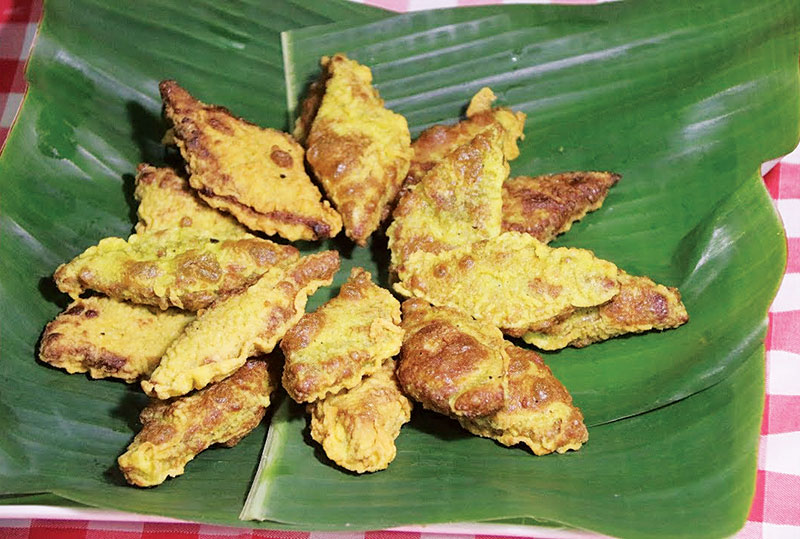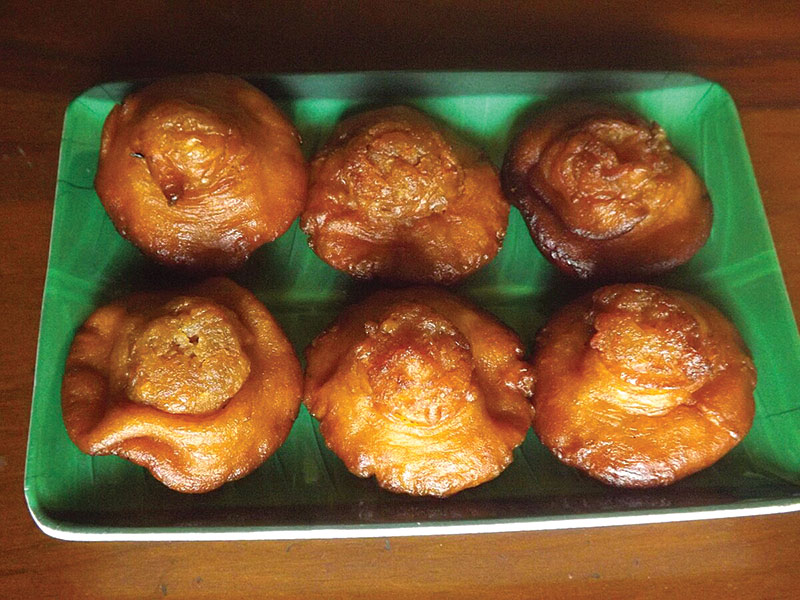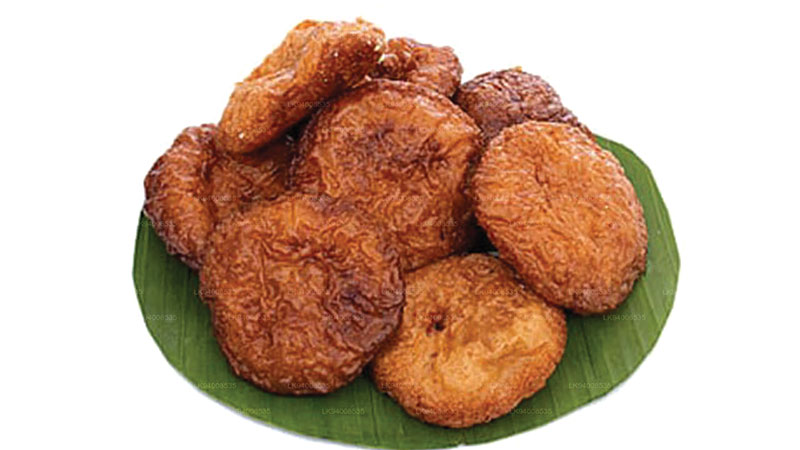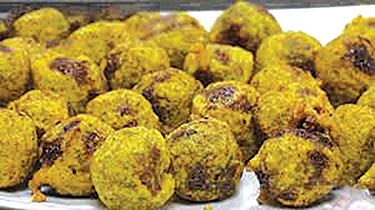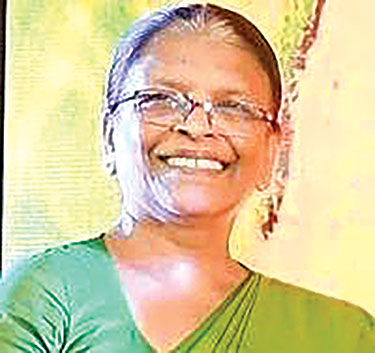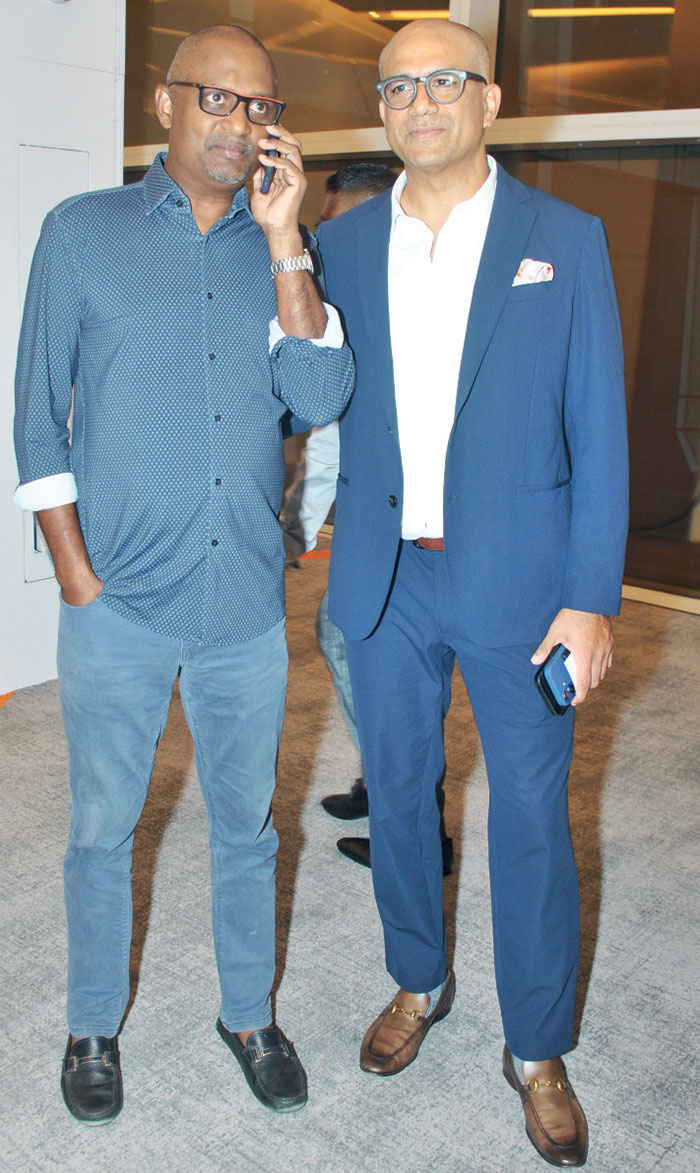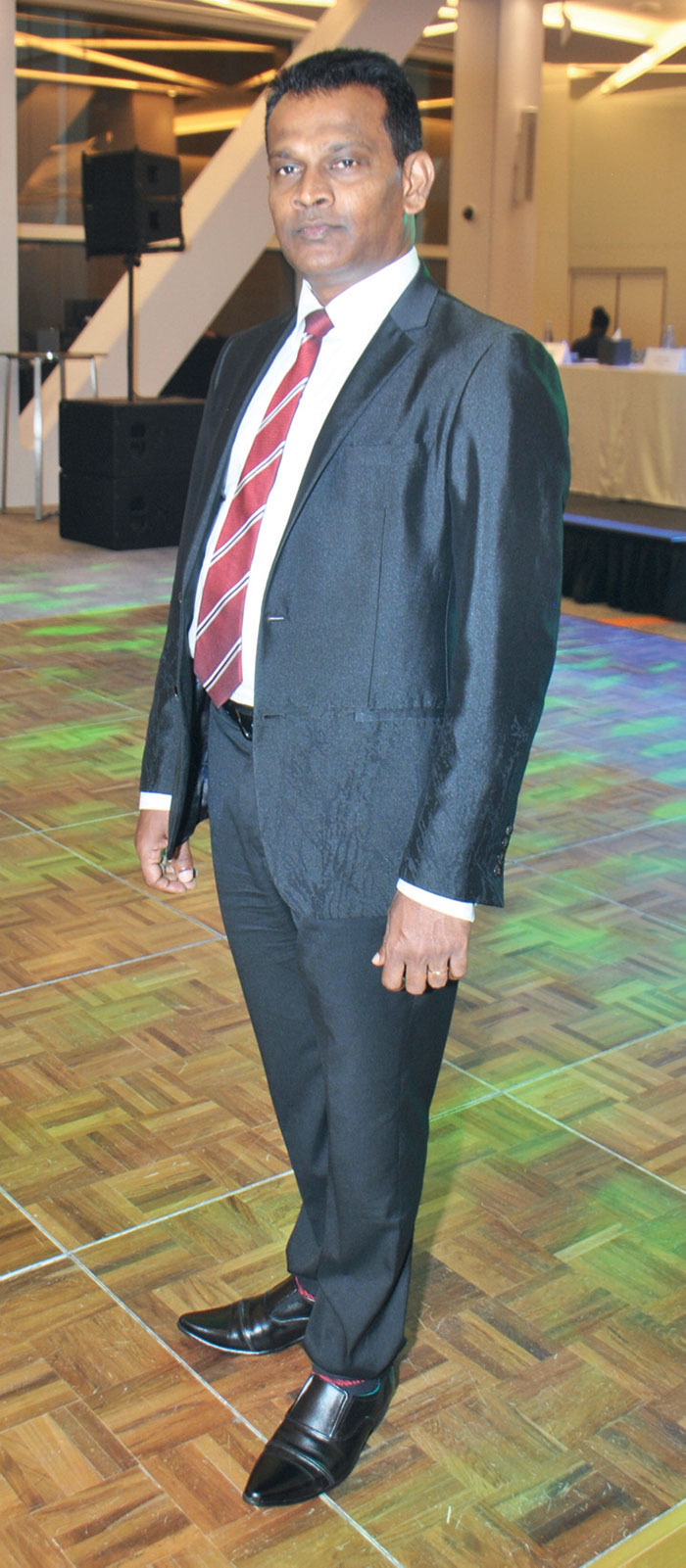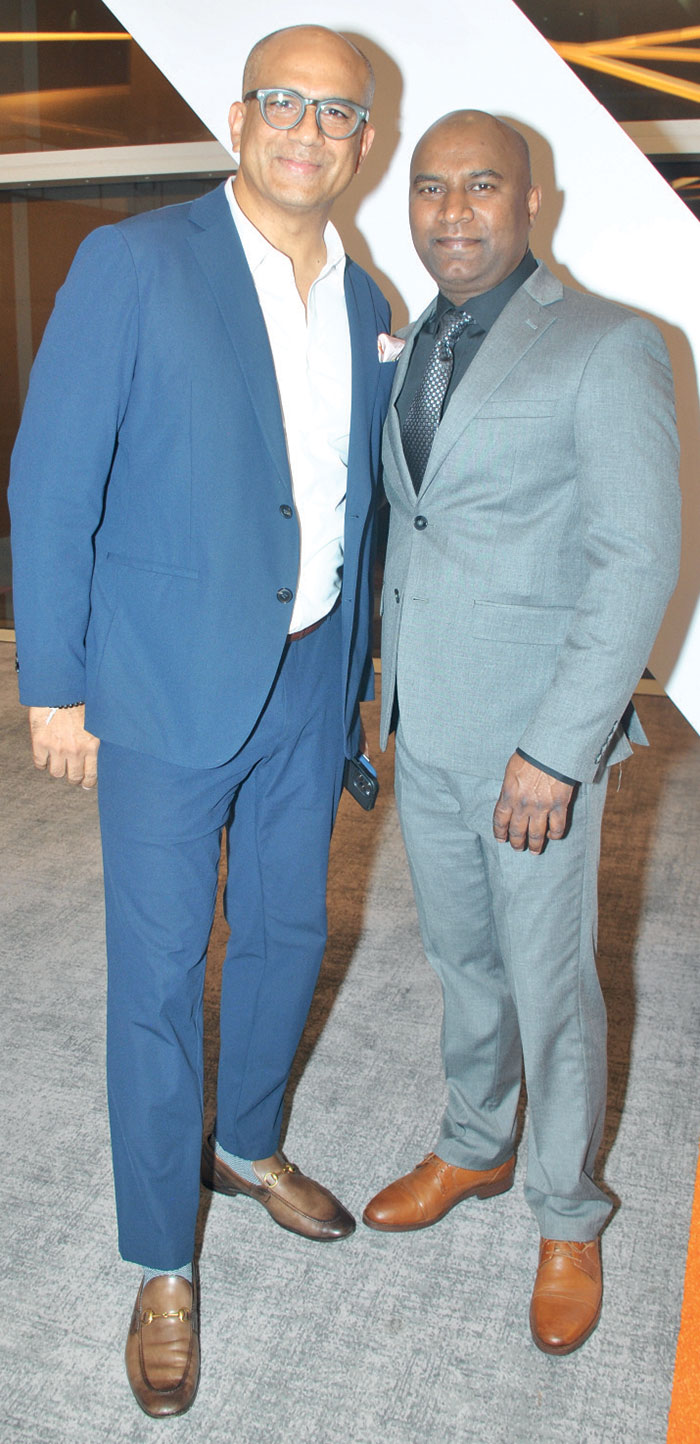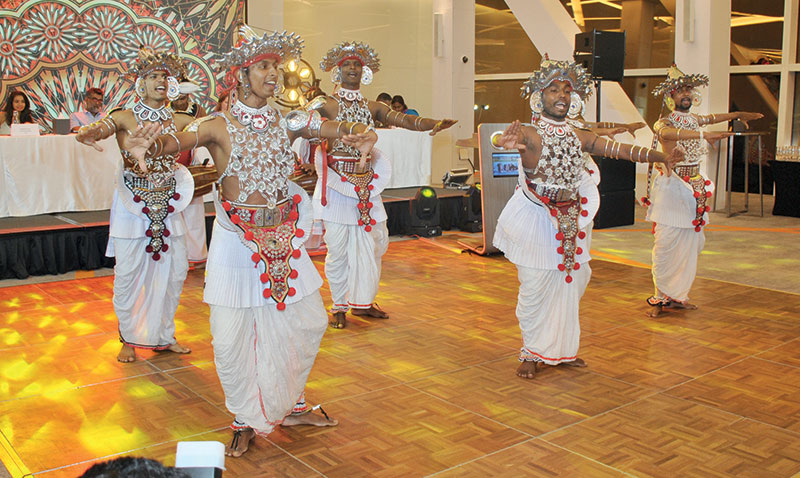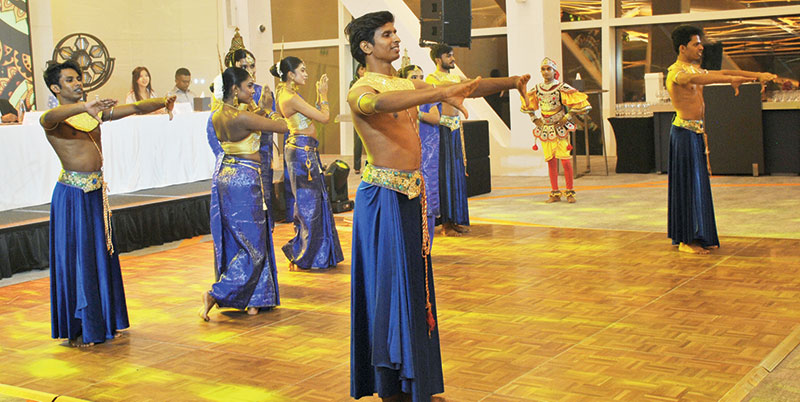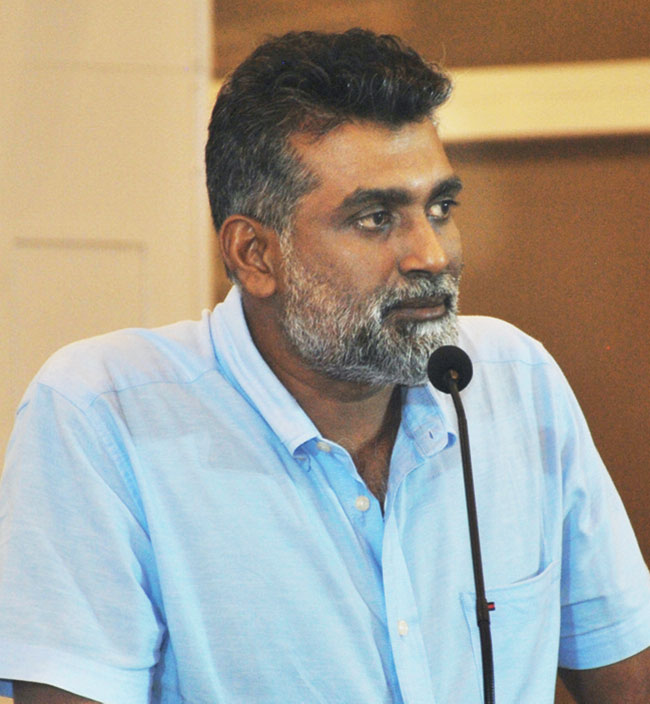Life style
Dosa : wholesome fast food obsession
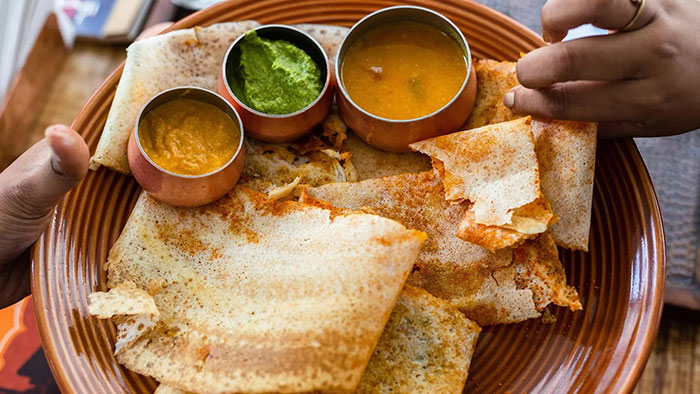
While South Indians have eaten this go-to breakfast food for thosands of years, it has evolved into a fast food item to be eaten at just about any time, day and night.
It was time for Sunday breakfast, and I sprinkled a few water droplets onto a hot griddle to check if they would sizzle. Perfect. Quickly, I poured a ladleful of pale batter onto the pan’s centre, gently spiralling it outwards. Then, raising the heat, I added a generous spoonful of ghee (clarified butter) around the newly formed disc, which soon began to rise slightly and curl at the edges. Now it was time to flip it and cook the other side.
The traditional dosai dates back at least two millennia
Although the glistening, golden-brown circle might have looked like a French crepe or a Russian blini, it was neither. It was a dosai, a thin South Indian pancake made from a fermented batter of soaked rice and black gram, a 2,000-year-old dish beloved by millions of Indians that can now be found in almost every part of the planet, from Parry’s Corner in Chennai to Paris’ La Chapelle neighbourhood (also known as “Tamil Town” or “Little Jaffna”).
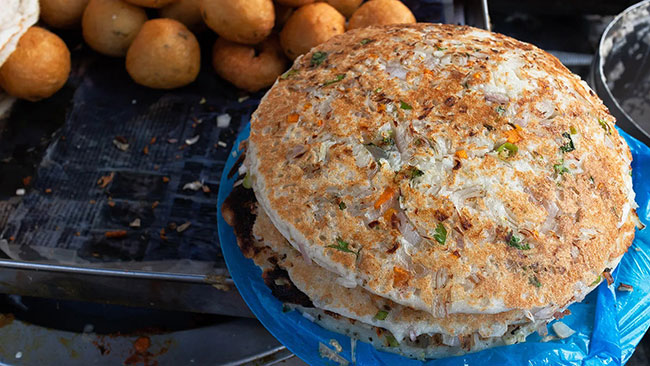
With no time for admiration, I carefully slid a spatula under the hot pancake and plated it alongside a small heap of idli podi, a spicy lentil-based powder. After making a slight crater in the heap, I filled it with gingelly (sesame) oil and mixed them together. Finally, I tore a piece off the crispy dosai, dabbed it in the mixture and popped it into my mouth, enjoying a pleasant burst of tart and spicy flavours followed by an earthy aftertaste of sesame.
This is how millions of South Indians eat this wholesome and satisfying vegetarian dish every morning, sometimes opting for a side of chutney and sambhar (a tangy lentil-based broth) over the idli podi. However, over time, the dosai – also known as thosai, dose or attlu, depending on the Indian region, and as the anglicised “dosa” around the world – has evolved to include different ingredients and fillings such as spicy potatoes as in the globally ubiquitous masala dosa.
The traditional dosai dates back at least two millennia, being documented in ancient literature and passed down through the generations, with the South Indian states of Tamil Nadu and Karnataka both claiming it as their own. In his book The Story of Our Food, food historian K T Achaya says that King Someshwara III (who ruled parts of the present-day Karnataka state) mentions dosai as “dosaka” in the 12th-Century Sanskrit literary work Manasollasa. However, ancestors of the dosai such as mell adai (a pancake made of lentils and rice) and appam (a rice pancake soaked in coconut milk) were being consumed in the Tamil region much earlier.
“Appam and mell adai do find a mention in Madhuraikanchi, a Sangam age literary work from the 3rd or 4th Century,” said Jayakumar S, a researcher of South Indian history and founder of . “But, the actual term “dosai” seems to have been added much later into the lexicon.” He further explained that Senthan Divakaram, an ancient Tamil lexicon (some ascribe it to the 10th Century) attributes dosai to one of the varieties of appam that’s often eaten with the coconut milk on the side.
Despite any debate over who owns the dosai, chefs from the Udupi region in Karnataka were credited with the crispy version we know now somewhere in the 19th Century. Until then, the dosai was more of a soft, fluffy and lacy crepe. And to this day, institutions like (opened in 1924) and (opened in 1943) in Karnataka’s capital Bengaluru have been dishing out delectable dosai for decades. By the early 20th Century, however, many Udupi chefs had migrated to larger Indian towns and cities, popularising the dosai – especially the masala dosa – across India as an affordable breakfast item given its humble and widely available ingredients.
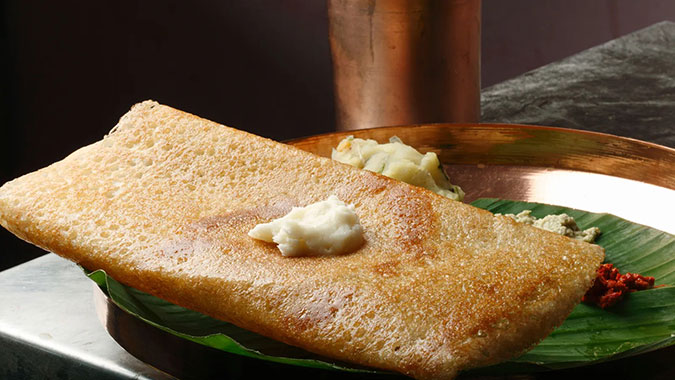
In 2003, the Chennai-based chain took things to the next level by opening South Indian restaurants in various countries, starting in Dubai. And the dosai has continued to grow in popularity around the world, mainly due to the large Indian diaspora who regularly devour the dish and its many variations – including US Senator and current vice presidential candidate Kamala Harris, whose video of took Twitter by storm last November.
The dosai has also recently become trendy in health and wellness circles in India, as it’s considered due to the probiotic qualities that come from its fermentation process. The soaked triad of rice, black gram and a few fenugreek seeds (which impart a distinctive nutty flavour and bitter undertones) is ground with some water and then transferred to a vessel to ferment naturally for seven to eight hours. A few spoonfuls of salt are added after grinding to accelerate the fermentation process.
“The final fermented batter, owing to the action of lactic acid bacteria and yeasts, has increased levels of essential amino acids. This aids in the reduction of anti-nutrients (such as phytic acid) and enzyme inhibitors, thus making it an extremely nutritious food to consume,” explained microbiologist Dr Navaneetha T.
The dosai, termed “dosaka” in ancient Ayurveda texts, is also used by Ayurveda experts in bespoke treatment menus.
“Dosa and idli
[a savoury rice cake made with the same batter as dosai] are part of the diet to treat muscle wasting, constipation and debility,” said Dr Sreelakshmi, a senior wellness consultant in Delhi.
We can dish out almost 70 varieties of dosas at any given time
For most Indians though, dosai is a go-to breakfast food that has evolved into a fast food item to be eaten at just about any time, day and night. Owing to its popularity, affordability of its ingredients and the ease with which the batter ferments in a tropical region like India, dosa outlets can be now found in every corner of the country and beyond.
“Over the years, the batter’s flexibility to be dished out in many variations has aided and lent itself to dosa’s evolution as comfort food,” said chef Thirugnanasambantham K, principal of Welcomgroup Graduate School of Hotel Administration in Manipal. And while the dosai is usually eaten plain (sans fillings), food trends, ingredient availability and convenience factors have resulted in many alternative dosai varieties, both filled and non-filled.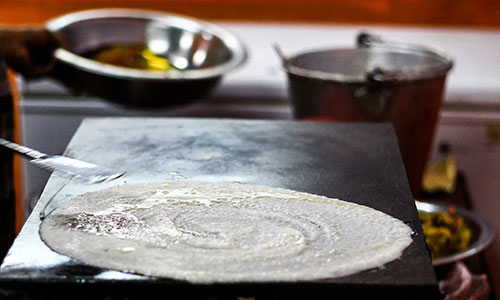
For example, in households across Tamil Nadu, when the fermented batter turns overtly sour from too much fermentation, it gets transformed into uthappam (a thicker dosai with chopped or sliced vegetables); while coconut milk is used instead of black gram in the delicious appam. And new varieties are being created all the time. From Szechuan dosa, hailing from India’s Chinese culinary influence, to the North Indian-inspired paneer butter masala dosa, there is no dearth of dosas churned out by food ventures across India. Even McDonald’s capitalised on this culinary obsession by introducing its in December 2019.
Brothers Ritesh Bhattad, 31, and Ygesh Bhattad, 33, are second-generation businessmen who have flourished by swirling the humble dosai batter. “We can dish out almost 70 varieties of dosas at any given time,” said Ritesh. “However, our signature RBS dosa [filled with grated paneer and onions mixed with peanut chutney and spices] easily sells close to 5,000 pieces every month.” The duo’s successful family-run fast food and catering enterprise, in Hyderabad, has been a hit with college students and office workers, allowing them to open outlets at three more locations across the city.
According to , the masala dosa has been the most-ordered vegetarian dish across India during the pandemic. A whopping 331,423 masala dosas have been delivered by India’s food delivery company, , since lockdown began in the last week of March. This version of dosai has become synonymous with South Indian cooking around the world, although it wasn’t part of India’s culinary history until the Dutch and Portuguese introduced potatoes to India in the 17th Century.
However, in South India, the dosai remains more sacred than a mere breakfast or fast food item, and forms part of the edible offerings to god categorised as “temple cuisine”, which follows closely guarded recipes and sometimes old temple inscriptions.
Azahagar Kovil temple in Madurai, for example, makes a thick and fluffy dosai spiced with cumin seeds and crushed black pepper that is deep-fried in ghee as a divine offering, which is then eaten by devotees. In the town of Kanchipuram in Tamil Nadu, a dosai recipe is depicted on the walls of Varadaraja Perumal Temple. “We have an interesting 16th-Century inscription on the walls… mentioning the preparation of dosai (both savoury and sweet) during Ekadasi processions [religious events conducted on the 11th day after the full moon, and on the 11th day after the new moon],” said Jayakumar S. “This confirms that dosai has been part of the Indian temple cuisine for a long time.”
Whether made at a temple, on the streets or at home, the dosai in its many variations is a divinely tasting food that is deeply embedded into Indian culture.In my family, the dosai isn’t just another food; it’s more like an emotion that cannot be replicated – only experienced in the moment. These words of wisdom came from my grandma, who, a few years back, let me in on an age-old secret shared in turn by her grandma: that no two people can swirl a dosai the same way, no matter how much one tries.
– BBC
Life style
Kevum – Befitting a King
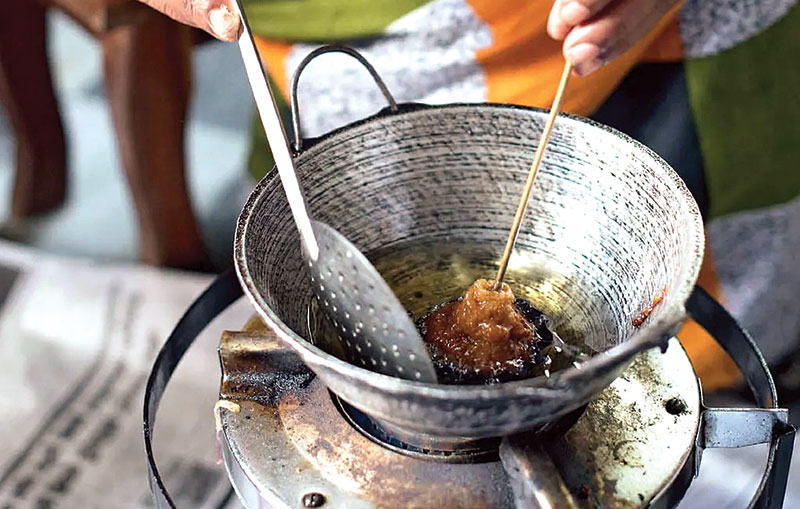
The avurudu table of any Lankan home is complete only when it is laden with kevum. Dating back to ancient times, many types of kevum are chronicled even in our classical texts. The Dutch rulers of the island are said to have relished them, some even asking if they grew on trees… A delicacy which was offered to visiting dignitaries, kevum was revered by our kings even in the battle field not only as an energy-booster but also as a wound disinfectant.
BY RANDIMA ATTYGALLE
The culmination of Avurudu preparations in my childhood with my grandparents was marked by the ritual of Kevum-making. Athamma would ‘book in advance’ the kevum specialist Soida Hami (Soida aachchi to us children), and install a special hearth in her back verendah for the grand moment. I would watch Soida aachchi in wonderment as her thick batter of rice flour and best of kithul treacle shaping into kevums in a hot wok of coconut oil. The long kevum koora in her nimble fingers would achieve the feat of the perfect konde. It was almost a rite of reverence, so much so I was not supposed to talk to her until the first batch of Konda-kevums was completed. Like many old-folk of her vintage, Soida aachchi believed that talking while the first few kevums are done would result in a flawed product.
She would then place each perfect Konda kevuma on a banana leaf for the excess oil to drain. Once the whole exercise was completed, she would place Konda-kevum in large earthen pots and store them in the dum messa or the storage area above the main hearth of the kitchen. She would spare me only one kevuma and the rest had to wait until the auspicious time on avurudu day!
Travellers’ records
Robert Knox an English sailor who was held in captive in the court of the Kandyan King Rajasinghe II and one of the prolific chroniclers of ancient Ceylon in his famous work, An Historical relation of the Island Ceylon documents on the sweet meats of Lankans with a special account of kevum.
‘They have several sorts of sweet-meats. One they call Caown. It is like to a fritter made of Rice-flower and Jaggory. They make them up in little lumps and lay them upon a leaf, and then press them with their thumbs and put them into a frying-pan and fry them in Coker-nut Oyl or Butter. When the Dutch came first to Columba, the King ordered these Caown to be made and sent to them as a royal treat. And they say, the Dutch did so admire them, that they asked if they grew not upon trees, supposing it past the Art of man to make such dainties.’ (Spelling as in the original Knox)
The account of Knox enables rich insights into this wonder of a sweet meat which enthralled many a traveller to the island including dignitaries. The European trader Cosmas who visited Ceylon in 545-550 AD, documents that along with gems, Kevum and Kalu dodol from Ceylon were taken to the Roman court of Emperor Claudius during the sixth century.
- Mun kevum
- Konda kevum
- Athirasa
Classical literature
Kevum dates back to ancient times and our classical texts such as the Ummagga jatakaya, Pujawaliya and Saddharma Ratanawaliya bear evidence to this fact. “Originally known as poopa this sweet meat came to be known as kevum in the Dambadeniya-Kurunegala era. Jathaka atuwa getapadaya mentions 18 kinds of sweet-meats found in the ancient Sri Lanka and among them are several types of kevum such as sendi kevum, mal kevum, athirasa, pena kevum, raa-kevum,” says Prof. Kusumalatha Lankamulla from the Department of Sinhala and Mass Communication at the University of Sri Jayewardenepura.
This scholar with research interest in Culture, Traditional and Modern Literature goes onto note that Mahawamsa in its 32nd chapter refers to two types of kevum in the context of alms offered by King Dutugemunu. The two types- thel kevum and maha de kuvum mentioned, were fried in ghee. “Many of our classical texts mention kevum in multiple festive contexts beyond avurudu. In Ummagga jathakaya, kevum is mentioned as a fitting gift to be taken when visiting parents. Saddharma Ratanawaliya refers to boxes of kevum or kevum pesa.“
An energy booster
Among the popular kevum types found today are Konda kevum, athirasa, mun-kevum, naran kevum and hendi-kevum. Although the ingredients used for each type may slightly differ, rice flour and treacle (now largely replaced with sugar) remain common to all. The much sought after Konda kevum which is relatively a later addition to the range of kevum found here at home is believed to have originated during the Kandyan period says Prof. Lankamulla. “During the Kandyan period, men were prohibited from cutting their hair off and they had to tie it in form of a knot on top of their heads. Konda kevuma is believed to have been inspired by this practice.”
Traditionally, Sinhalese soldiers were given a bag of kevum when going to war. History has it that King Dutugemunu went a step ahead and used kevum to treat wounded soldiers. His army used to prepare kevum months in advance and keep them exposed to air so that the mould can grow on them.
This mould in today’s language had ‘antibiotic properties’ and was used on the wounds of the soldiers to prevent them from festering. “In a bid to undermine the pride of place given to kevum as a super food by the locals, the British coined the famous derogatory adage: ‘Sinhalaya is a fool but is an ace at eating kevum’. (Sinhalaya modaya-kevum kanna yodaya)
Steeped in tradition
Superstitious beliefs surrounding the process of kevum-making are not uncommon and these vary from region to region in the island, says Prof. Lankamulla. Regardless of the region, several common traditions were followed by our ancestors and these still continue to be observed in several parts of the country, she says. “The frying pan with coconut oil to prepare the kevum was kept on fire at an auspicious time and village matriarchs who were highly skilled were mobilized for the occasion. Women also believed that they must refrain from talking when the first kevum is being made. For centuries, the first kevum was considered to be the ‘konduru kevum’, dedicated to the sledge-fly or the konduruwa. The village women would hang the first kevum up for the insects so that the rest would be unspoilt.”
With the passage of time, many Lankans, particularly city-dwellers depend on commercially available avurudu kevili including kevum. Although kevum is synonymous with avurudu, today people get to enjoy it round the year thanks to many sweet meat kiosks found in cities. Although these outlets have best sales during avurudu, they get plenty of orders from Lankans travelling abroad or coming home for vacation at other times of the year as well.
One such die-hard kevum fan is Uthpala Ranatunga from Ottawa, Canada. “My Loku amma (oldest aunt) makes it a point to pack me a parcel of best quality Konda kevum to take with me whenever I’m in Sri Lanka for a vacation.
I deep-freeze them for longer use and eat them sparingly,” says Uthpala to whom kevum is always a strong reminder of home. “Each time I indulge in them I feel nostalgic and miss home.”
Kevum is an integral part of the Lankan culture, finding its way from ancient classical literature to that of the contemporary including children’s literature and arts. The much-loved sweet meat is celebrated in the work of Sybil Wettasinghe – the iconic story teller and illustrator.
Come avurudu, we often hear the intonation of Lionel Ranwala, the eminent musician, vocalist and an authority on Sri Lankan folk music, whose tribute to the enduring legacy of this delicacy is one of the best in our times:
Me avurudu kale -sinaha weyan rale
Thel ihirunu kewum gediya wage…
Fashion
Festive glamour at Nethara

Nethara Collection ,is a world of export quality garments in Diulpitiya, Boralesgamuwa, is infused with an ultra festive spirit this season catering to the women of today. Unbelievable offers and discounts from Nethara for Sinhala anTamil new year. On selection of women’s clothing, ranges from casual options to formal occasion wear,all at friendly prices,to enhance your wardrobe this festive season.
Nethara collection, started small in 2017, but soon it outgrew, today with an ever increasing customer base, branded and non branded clothing this shopping centre has become very popular. Export quality , stylish dresses, crop tops, fancy blouses, trousers and many more to flaunt yourself and enhance your wardrobe.Their extensive collection, maintain low pricing allowing everybody to have a chance to shop till they drop dead. From casual wear to formal wear,they have women to men’s items like tee shirts, shirts for every occasion.
Nethara clothing has long remained a name that has struck a chord with Sri Lankan shoppers. “We believe our success has been based up on the premise that absolute sincerity towards customers and no matter what the economic situation that prevails, we try our level best to keep our prices low and within everybody’s budget, said managing director, Nethara Collection Sampath Kumara.
This April season Nethara collection brings an all new collection of export quality seasonal wear. Celebrate the season with exclusive offers made just for you! Dresses, blouses, casual, formal wear denim, men’s shirts and many more… world of limitless style and joy!
This festive season Nethara unwraps a celebration of warmth, style and sophistication. Immense yourself in a vibrant festive atmosphere as you explore thier collection under one roof 345 Boralasgamuwa With a focus on quality, affordability and customer satisfaction, Nethara export quality boutique invites you to celebrate the Sinhala and Tamil New Year in style.
(Zanita)
Life style
Sri Lanka tourism unveils strategic vision
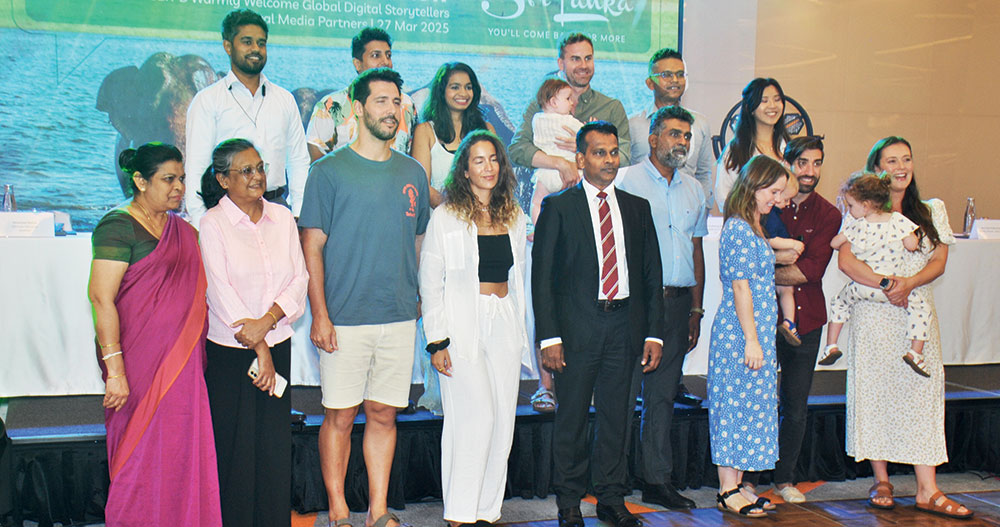
Sri Lanka Tourism Bureau hosted a landmark event at cinnamon Life for an ambitious campaign to spotlight Sri Lanka as a top travel destination. This initiative hosted international influencers and local media to capture the unique charm of Sri Lanka’s destinations. These travel influencers will share thier real time content across platforms like Instragrams Tik Tok and youtube amplifying Sr Lanka as a must visit destination. Many media personal, bloggers and influencers participated in this event which will take them on a tourism travel featuring some of Sri Lanka’s top destination.
Sri Lanka Tourism Promotion Bureau (SLTPB) hosted a landmark event at the Cinnamon Life Hotel, Colombo. The event was led by . Deputy Minister of Tourism, Prof. Ruwan Ranasinghe, with the participation of SLTPB Chairman Buddika Hewawasam, officials, travel influencers and their families, as well as journalists specializing in tourism sector reporting. The gathering set the stage for transformative initiatives aimed at bolstering Sri Lanka’s tourism sector and redefining its global image.
In his opening remarks, Buddika Hewawasam underscored the challenges facing the tourism sector, particularly the seasonal dip in arrivals during the summer months. “The next few years will be the most challenging period for all of us,” Hewawasam stated, emphasizing the need for international collaboration and strategic development. He further highlighted the critical role played by international travel influencers and media professionals in raising awareness of Sri Lanka’s hospitality and inspiring tourists worldwide to visit.
- Dileep Mudadeniya
- Deputy Minister of TourismProfess or Dr Ruwan Ranasinghe
- Guests
The Deputy Minister of Tourism, Prof. Ruwan Ranasinghe, detailed the innovative nature of the campaign and its importance in showcasing Sri Lanka’s rich heritage, natural beauty, and diverse travel experiences to mainstream and emerging tourism markets.
During the event, several prominent travel influencers shared their thoughts about Sri Lanka’s uniqueness as a destination. They highlighted that Sri Lanka is a country where travellers don’t need to worry about finding incredible experiences—nature has already done the hard work. The influencers remarked on Sri Lanka’s unparalleled diversity, noting that it is possible to experience a range of climates within just a few hours by travelling to different parts of the island. From sun-soaked beaches to misty highlands, and from lush forests to cultural treasures, Sri Lanka offers a world of adventures in a compact and accessible setting.
In comparison to destinations like Bali, which some influencers noted as overcrowded, Sri Lanka stands out with stable and balanced tourism activities. The event attendees were thrilled by the country’s warm hospitality, authentic DDirector cuisine with an impressive variety, long history, and rich culture. These qualities make Sri Lanka not only inviting but genuinely unforgettable for visitors.
The travel influencers in attendance expressed strong confidence in their ability to share this powerful message with the world. They were determined to shape international travel trends by showcasing Sri Lanka’s unique appeal, while also helping to attract new types of guests. The influencers represented a diverse range of travel segments, including family travellers, solo female travellers, honeymooners, and adventure seekers. Their efforts were supported by Sri Lanka Tourism officials and journalists representing both local and international media agencies.
The ‘Sri Lanka, A Story for Every Season’ campaign represents SLTPB’s first large-scale effort to boost summer travel through digital storytelling and influencer collaboration.
Featuring a curated destination familiarization tour, the campaign will spotlight wildlife safaris, cultural heritage, spiritual pilgrimage sites, scenic landscapes, and adventure tourism. Influencers will produce high-impact content for platforms like Instagram, YouTube, and Facebook, reaching over 2.2 million travel enthusiasts globally.
Sri Lanka Tourism shared impressive winter peak season results, with international arrivals reaching 665,295 by March 23, 2025—a marked increase compared to the previous year. These figures illustrate the sector’s potential for growth, and the campaign aims to sustain momentum throughout the summer months.
The event was a call to action for stakeholders to unite in elevating Sri Lanka’s global tourism appeal. With plans to generate over LKR 32 million worth of media coverage and connect with diverse travel segments, the campaign underscores Sri Lanka’s commitment to redefining itself as a leading destination for year-round travel.
By Zanita Careem
Pix by Darmasena Welipitiya
-

 Business6 days ago
Business6 days agoColombo Coffee wins coveted management awards
-

 Features7 days ago
Features7 days agoStarlink in the Global South
-

 Features2 days ago
Features2 days agoRobbers and Wreckers
-

 Features4 days ago
Features4 days agoSri Lanka’s Foreign Policy amid Geopolitical Transformations: 1990-2024 – Part III
-

 Features7 days ago
Features7 days agoModi’s Sri Lanka Sojourn
-

 Midweek Review4 days ago
Midweek Review4 days agoInequality is killing the Middle Class
-

 Features6 days ago
Features6 days agoSri Lanka’s Foreign Policy amid Geopolitical Transformations: 1990-2024 – Part I
-

 Features5 days ago
Features5 days agoA brighter future …


